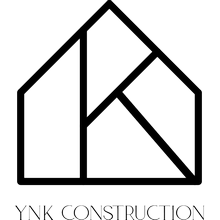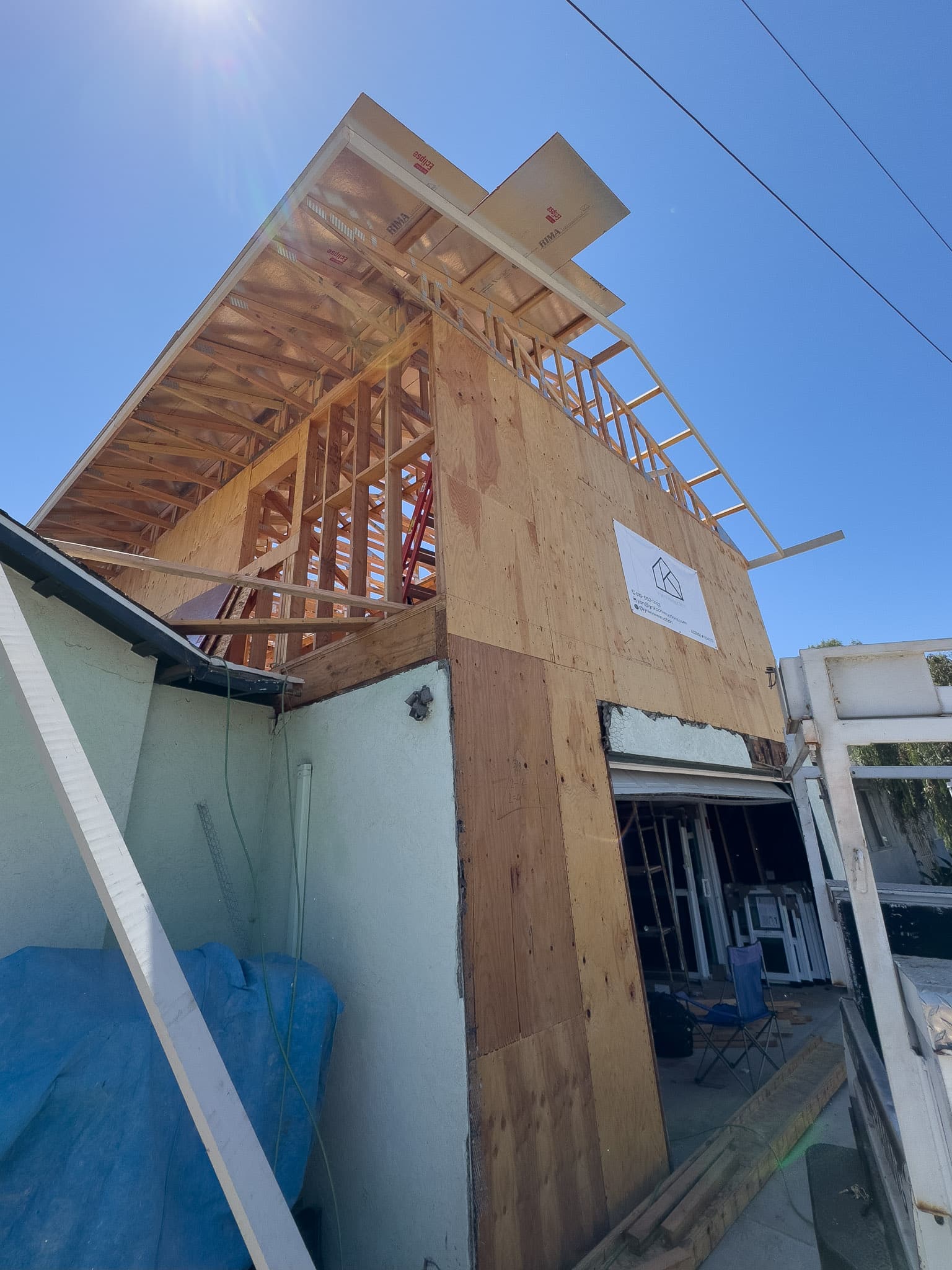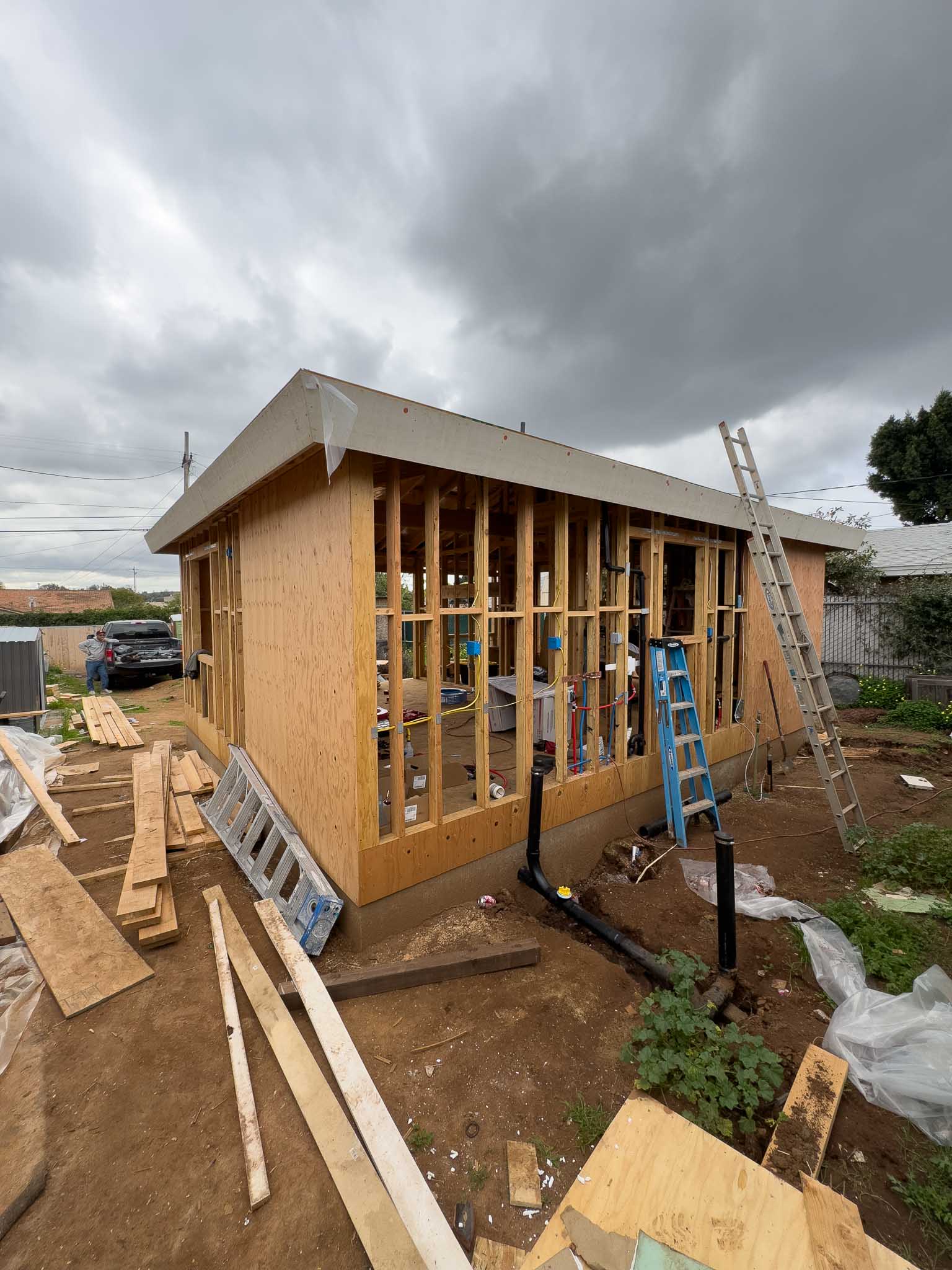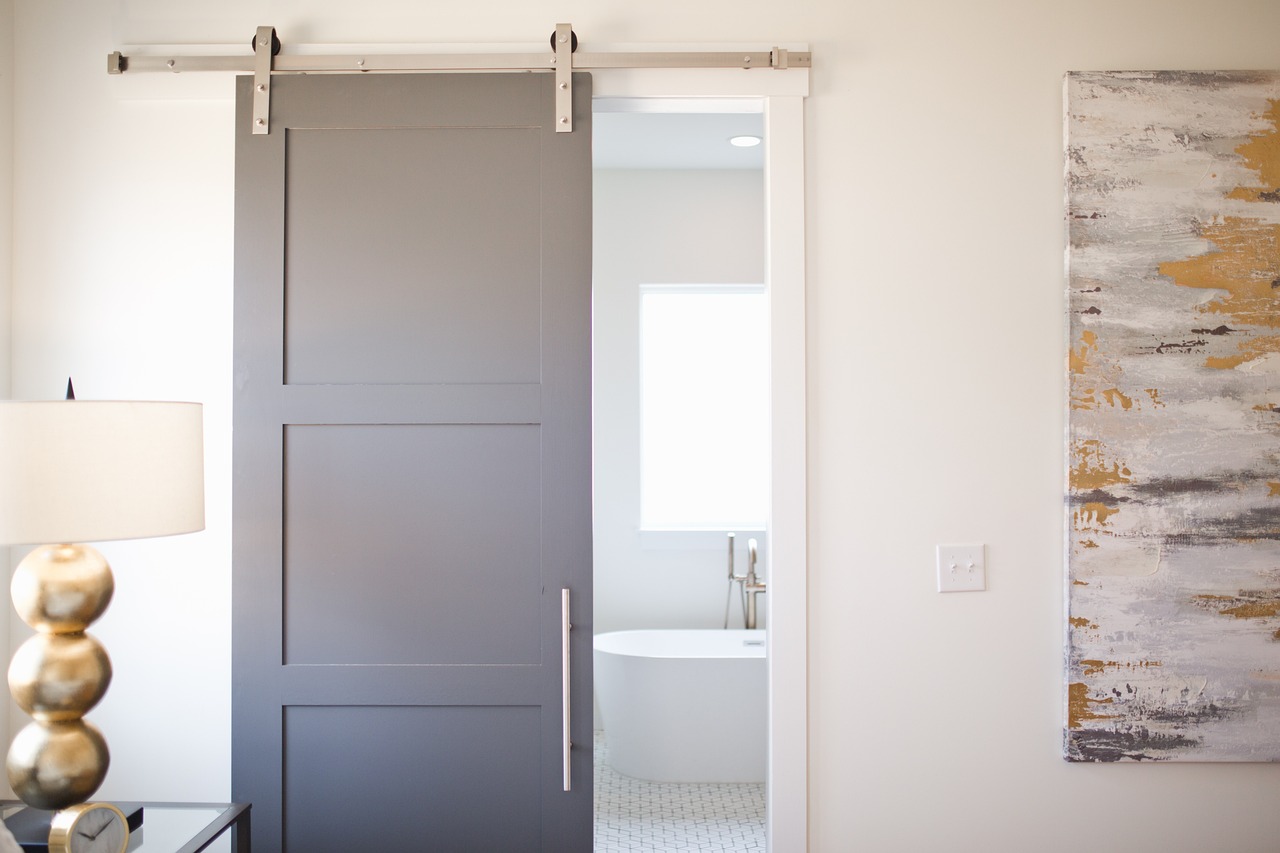Kitchen Island with Stove: What You Absolutely Need to Know Before Deciding
Welcome back to another article where we help you make better decisions in one of the biggest projects in your home renovation journey—your kitchen. Specifically, we’re focusing on kitchen islands, and even more specifically, kitchen islands with stoves. Adding a kitchen island with a stove can transform your culinary space, making it both a functional and social hub. However, this decision comes with a variety of considerations. In this article, we will explore everything you need to know before deciding to integrate a stove into your kitchen island.
Table Of Contents
Should You Have Your Stove in the Kitchen Island?
A kitchen island with a stove can offer numerous advantages, from enhancing the cooking experience to making the kitchen a central gathering spot. However, it’s essential to weigh these benefits against potential drawbacks to make sure it fits your desired outcome for your kitchen. There is no “one size fits all” answer for this question. Our hopes are that after you finish reading this page you will make the right decision that ultimately get you one step closer to your dream kitchen.
Related information: inspiration ideas for kitchen remodeling in 2024
Implications of Having a Stove in the Kitchen Island
Functionality
The primary benefit of having a stove in your kitchen island is increased functionality. By placing the stove in the center of the kitchen, you create a more open and accessible cooking area. This setup allows the cook to engage with family and guests while preparing meals, making the kitchen a more interactive and social space.
Moreover, an island stove can enhance the workflow in the kitchen. With strategic placement, you can optimize the classic kitchen triangle (stove, sink, refrigerator) for efficiency, reducing the need for excessive movement during meal preparation.
Aesthetics
A kitchen island with a stove can be a stunning focal point. It can give your kitchen a modern and sophisticated look, especially if paired with high-end finishes and appliances. The island itself can be designed to complement the overall aesthetic of the kitchen, using materials like quartz, granite, or butcher block countertops to create a cohesive look.
However, it’s crucial to consider the visual impact of necessary elements like ventilation hoods. These can sometimes be bulky and may detract from the sleek appearance of the island. Alternatives like downdraft ventilation can help maintain a clean aesthetic but may not be as effective as overhead hoods and can be very difficult to install.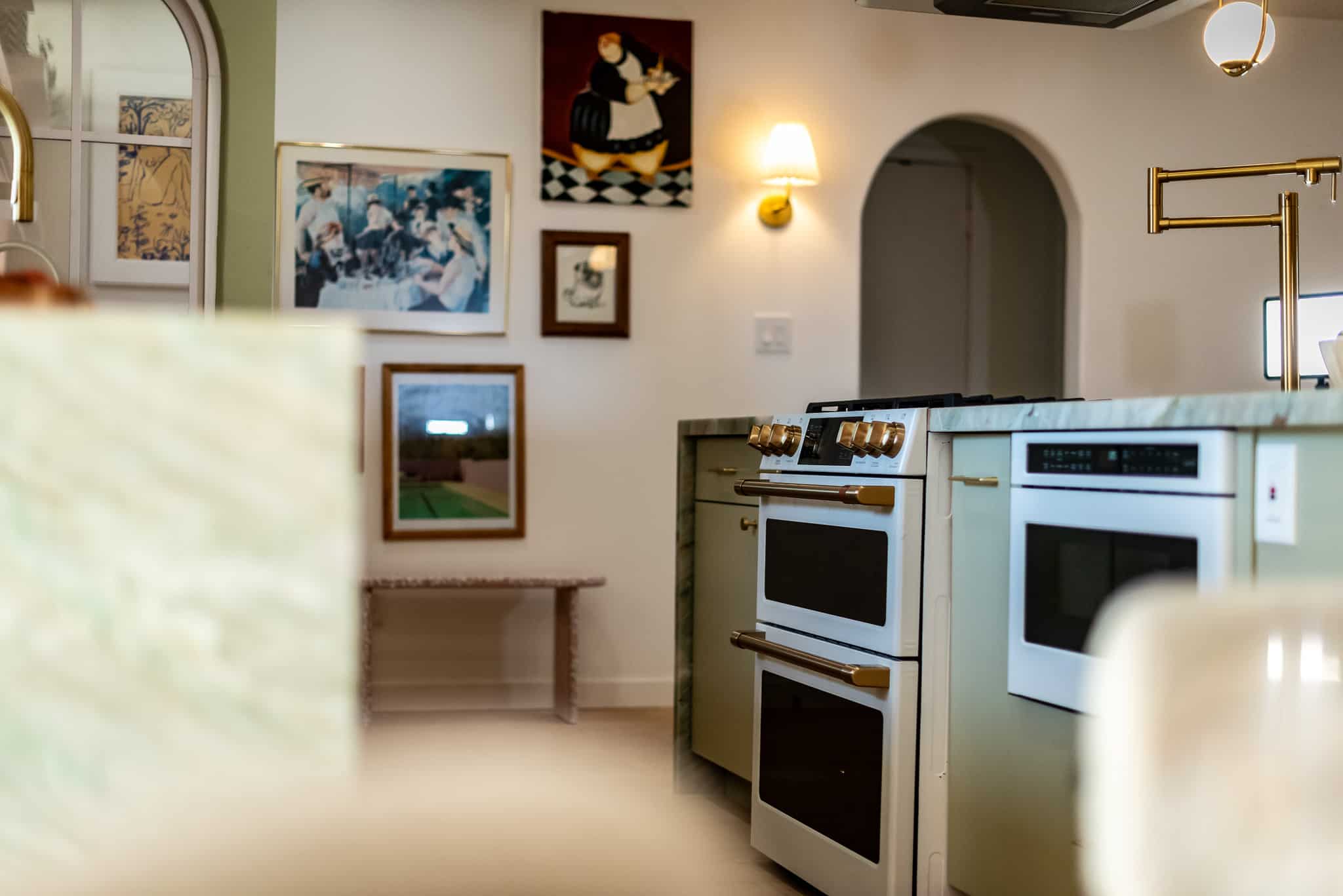
Budget
Installing a stove in a kitchen island can be more expensive than a traditional setup. The costs can add up quickly when considering the need for additional electrical or gas lines, enhanced ventilation systems, and custom cabinetry. It’s essential to budget for these additional expenses and weigh them against the potential benefits. If you are not sure about how much your ideas will costs you, contact us and we will gladly assess your costs together.
Example
If you have a typical set-up (L shape kitchen, with the oven being against the wall), and you want to relocate your stove and put it in a kitchen island, that will require running electrical conduit (typically a dedicated line with its own breaker in your electrical panel box) and a gas line (for gas operable stoves) – These two by themselves could cost you $2,000-$3,000, not to mention concrete patching if the house is on a slab foundation, another $800-$1000. Then you need to consider the ventilation relocation costs, which would be at a bare minimum another $600-$800 (if you can connect to an existing ventilation line and don’t need to open the roof and patch it later). You will be spending additional $2,600 to have that setup, and can go as high as $5,000-$6000 with all the added costs.
*Yes, we know your uncle in Missouri can do everything for less than $1,000, unfortunately he’s not available to help us in this case.
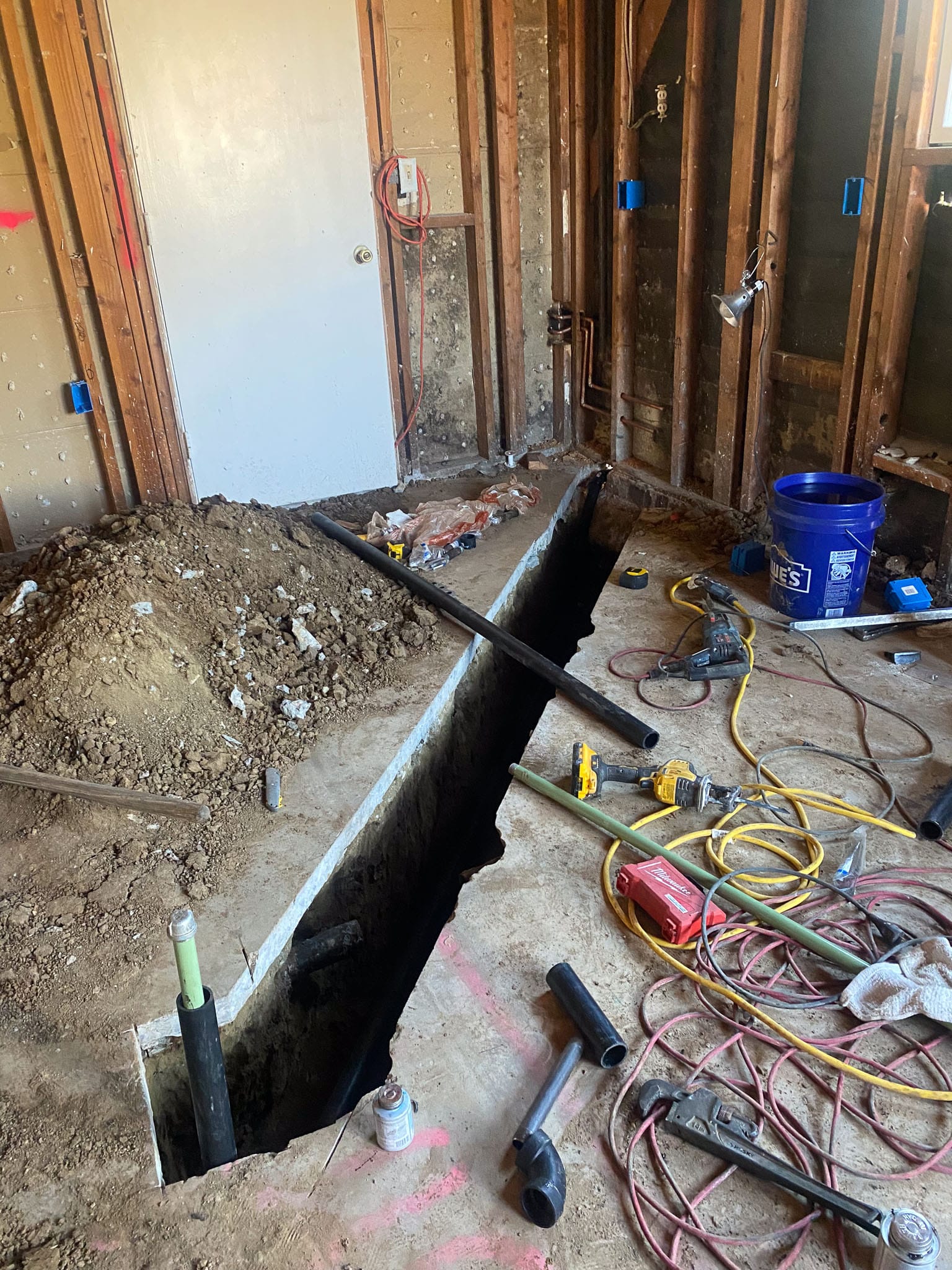
“trench in a concrete slab for the new cooktop location”
Most Common Issues When Planning a Stove in the Kitchen Island
Clearance
Proper clearance is vital to ensure safety and functionality. The National Kitchen and Bath Association (NKBA) recommends at least 42 inches of space between the island and surrounding countertops or appliances. This clearance ensures that there is enough room for people to move freely and safely around the kitchen.
If you would like to dive deeper into proper kitchen planning like a designer, visit the Kitchen Planning Guidelines by the NKBA.
Ventilation
Effective ventilation is crucial when installing a stove in a kitchen island. Without proper ventilation, cooking odors, smoke, and grease can quickly accumulate, affecting air quality and cleanliness. Overhead range hoods are typically the most effective, but they can be visually intrusive. Downdraft systems are more discreet but may not perform as well.
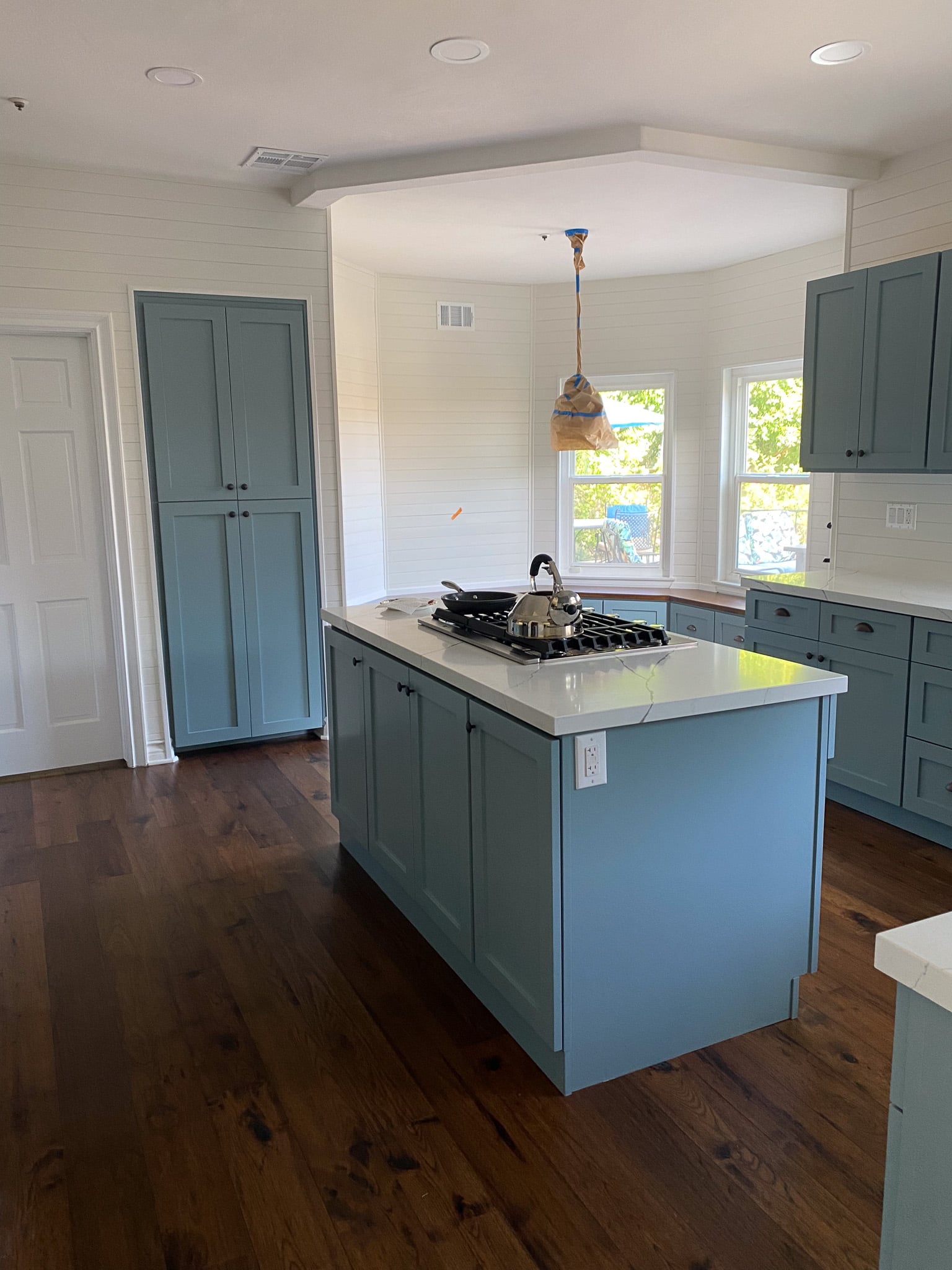
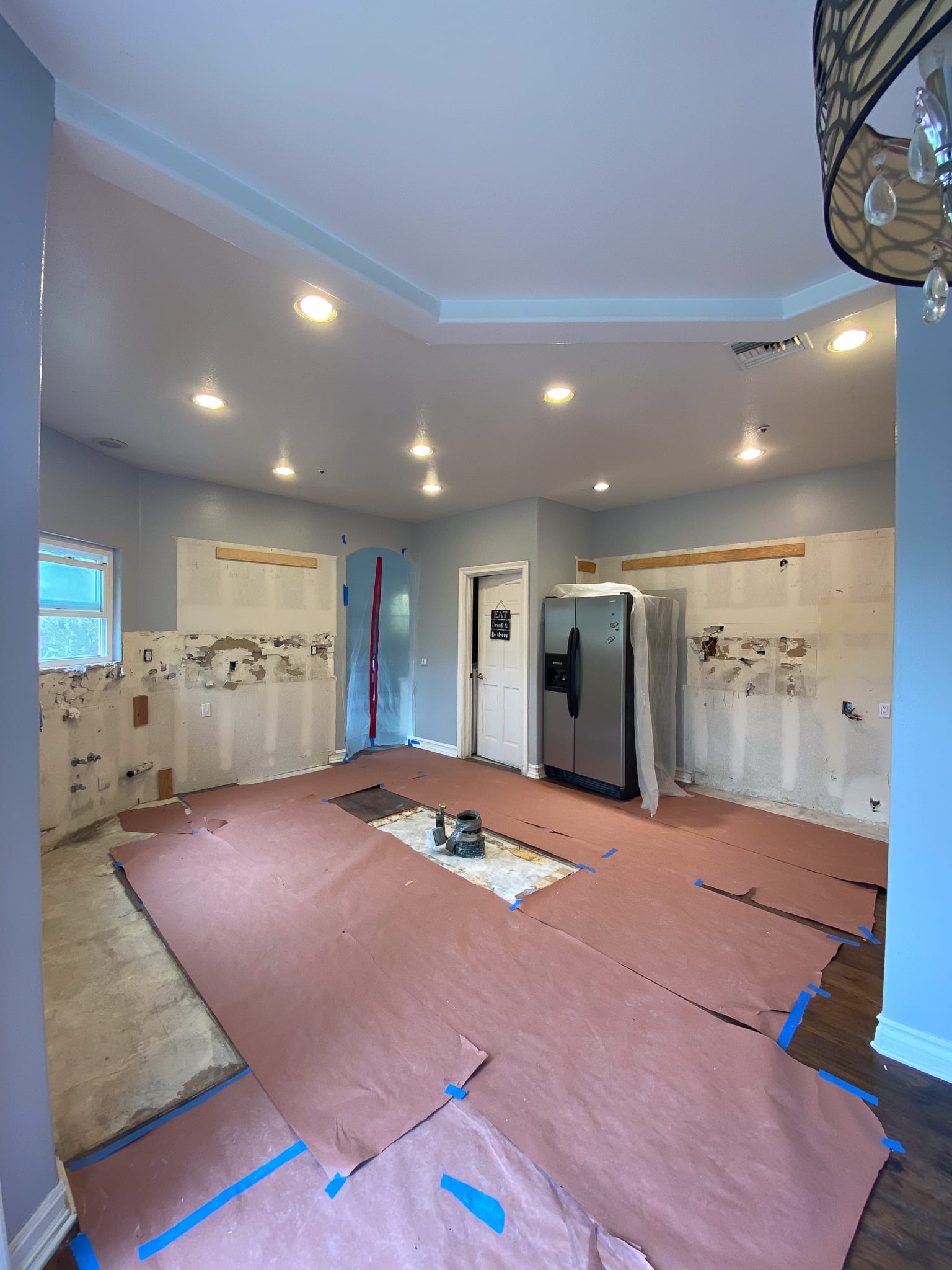
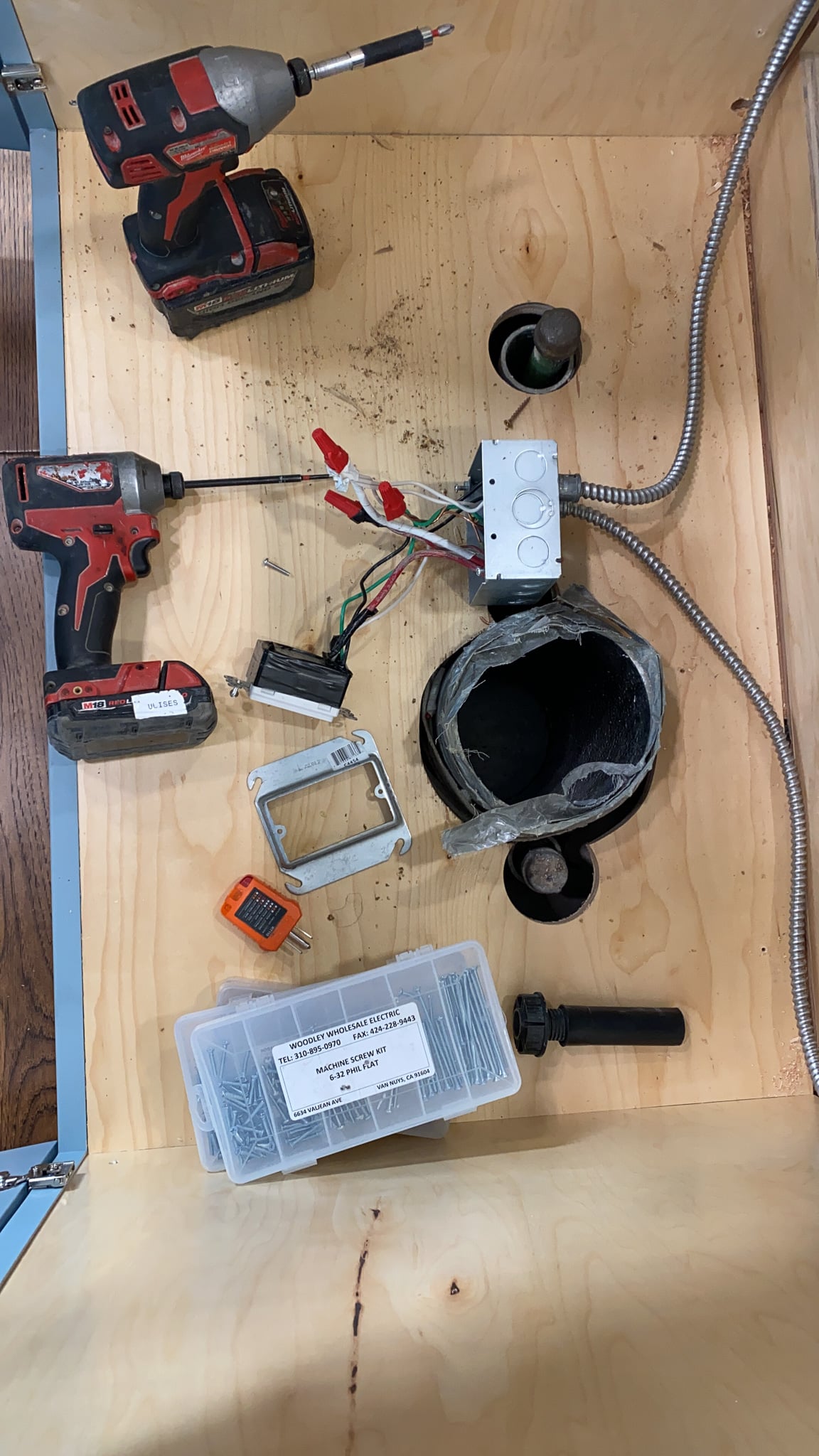
Gas vs Electric
Choosing between a gas or electric stove for your kitchen island involves considering several factors. Gas stoves offer precise temperature control and immediate heat but require a gas line installation, which can be costly and complex. Electric stoves are easier to install and can provide a more streamlined look, but they may not offer the same level of control as gas models.
Planning a kitchen island with a stove involves addressing common issues that can impact the functionality and safety of your kitchen.
Maintenance and Care
Maintaining a kitchen island with a stove requires regular cleaning and upkeep. Spills and splatters are inevitable specially since there is no backsplash, so it’s essential to use cleaning products that are safe for the materials used in your island. For cooktops, especially induction and glass, avoid abrasive cleaners that can scratch the surface. Regularly clean the ventilation hood and filters to ensure they function efficiently and effectively remove smoke and odors.
How to Decide Which One to Use in Your Island? Stove or Cooktop?
Wonderful! By now we’ve covered some of the aspects and challenges of having a stove in your kitchen island. If you are leaning towards it, the next big question is how to decide between a stove and a cooktop? To answer it, we need to evaluate your cooking habits, kitchen layout, and aesthetic preferences.
Stove in Kitchen Island
A stove, which includes both the cooktop and oven, can be a versatile and space-saving option. It allows for all-in-one cooking convenience, enabling you to bake and cook in the same area. This can be particularly useful in smaller kitchens where space is limited. However, one of the biggest drawbacks is that the oven is essentially on a lower level, meaning you will almost always need to duck or bend to pull trays out (for reference, the middle tray of the oven will be about 16”-18” above floor level). For someone with back or hip problems, this can be a nightmare, especially when cooking frequently.
Cooktop in Kitchen Island
A cooktop, on the other hand, is just the cooking surface, without the oven. This option can provide more flexibility in island design, allowing for additional storage or seating underneath. Cooktops are ideal for those who prefer a wall-mounted oven or already have sufficient oven space elsewhere in the kitchen. This setup can also contribute to a more open and streamlined look.
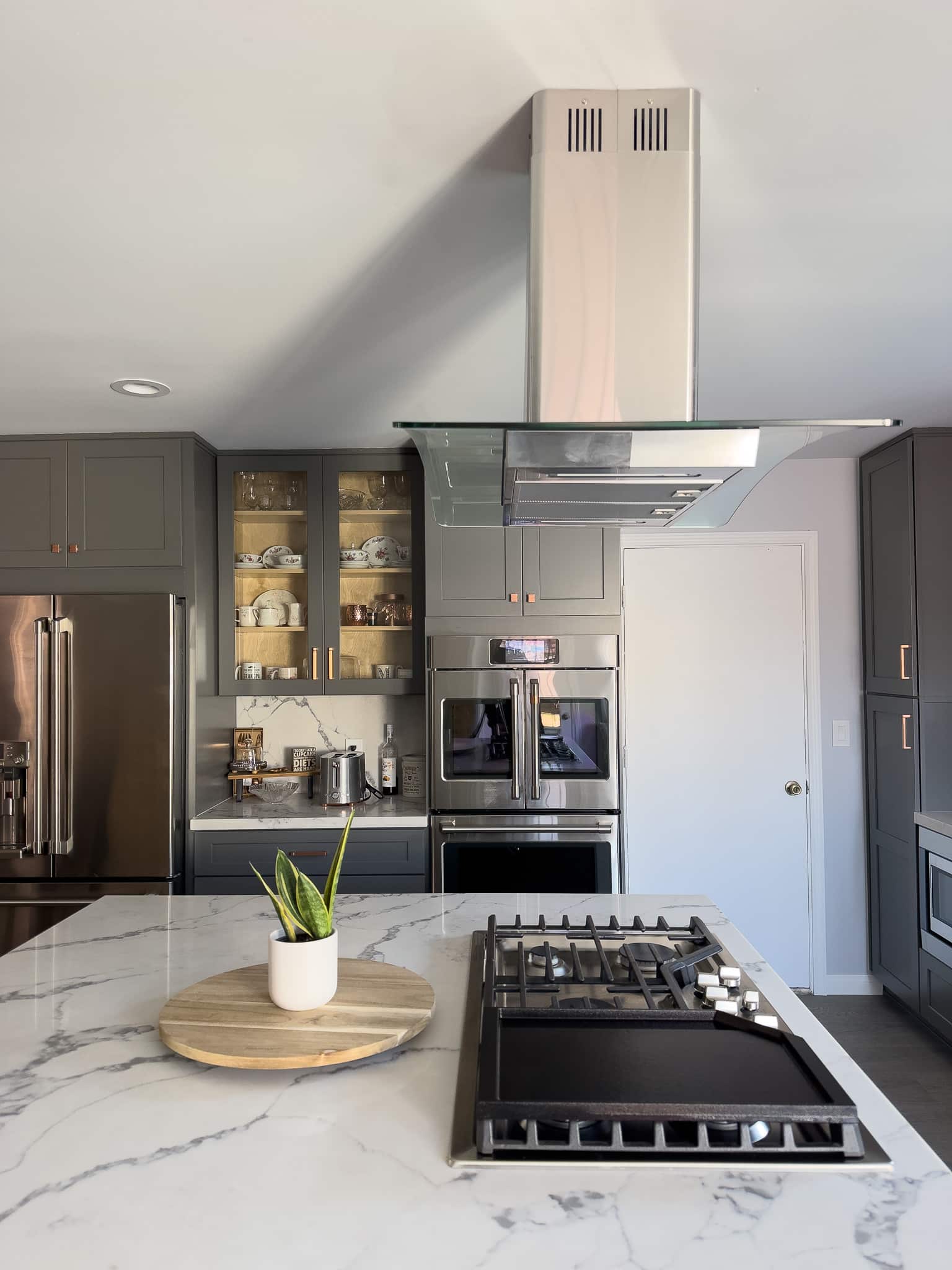
Is a Kitchen Island with Stove Worth It?
Ultimately, the decision to install a stove in your kitchen island depends on your specific needs and preferences. Here are some final considerations:
- Functionality: If your kitchen layout and workflow benefit from a central cooking area, a stove in the island can enhance efficiency and interaction during meal preparation.
- Aesthetics: Consider the visual impact of the stove and ventilation system. Ensure that these elements complement the overall design of your kitchen.
- Budget: Be prepared for the additional costs associated with installing a stove in the island, including ventilation, gas lines, and custom cabinetry.
- Safety: Prioritize safety by maintaining proper clearance and selecting a ventilation system that effectively removes smoke and odors.
In conclusion, a kitchen island with a stove can be a valuable addition to your home, providing both functional and aesthetic benefits. By carefully considering the implications and planning accordingly, you can create a kitchen that meets your needs and enhances your cooking experience.
If you would like to learn more about how to incorporate the right kitchen island setup in your next renovation visit our Kitchen Remodel section or fill up the form below and we will be happy to assist you with your future project.
